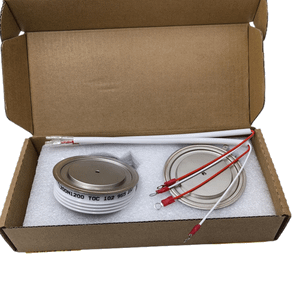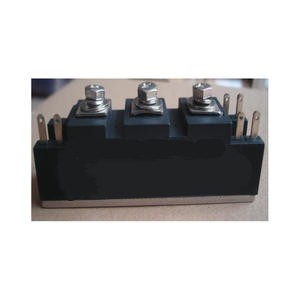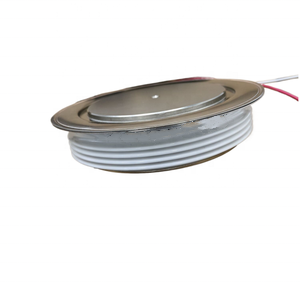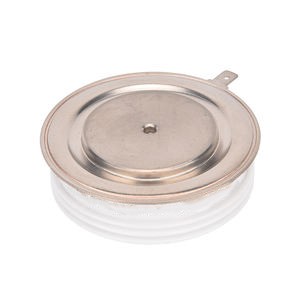Thyristors Online | High-Quality Power Semiconductors
PRODUCT PARAMETERS
Description
Overview of Heatlinks
Heatlinks function by providing a path of low thermal resistance between a heat source (such as an electronic component) and a heat sink or cooling system. They can be particularly useful in environments where space constraints limit the use of traditional cooling methods, or when a passive thermal management solution is preferred.
Heatlinks can operate based on different principles, including phase change materials, solid-state conduction, or even fluid-based systems. The choice of technology depends on the application’s specific requirements, such as operating temperature range, power dissipation levels, and spatial limitations.
Features of Heatlinks
High Thermal Conductivity: Designed to offer high thermal conductivity, ensuring efficient heat transfer from the source to the sink.
Compact Design: Often compact, allowing them to fit into tight spaces within electronic assemblies or other equipment.
Passive Operation: Typically do not require external power to function, relying instead on the natural flow of heat from hot to cold areas.
Durability and Reliability: Manufactured to withstand repeated thermal cycles and harsh environmental conditions without degradation of performance.
Low Profile: Thin profiles help minimize the impact on the overall design of products.
Versatility: Can be tailored to fit various applications, from consumer electronics to industrial machinery and aerospace components.
Customizable: Available in different shapes, sizes, and configurations to meet specific design needs.
Cost-Effective: Provide an economical solution for thermal management compared to more complex cooling systems.
Minimal Maintenance: Generally require little to no maintenance once installed.
Environmental Compatibility: Designed to be compatible with a wide range of environments, including those that may contain corrosive elements or experience significant temperature fluctuations.
(6063 aluminum sunflower heatsink CNC high density teeth heatsink aluminum profile)
Specifications of 6063 aluminum sunflower heatsink CNC high density teeth heatsink aluminum profile
This heatsink uses 6063 aluminum alloy. This material moves heat well. It is also strong. It does not rust easily. The design looks like a sunflower. Many thin fins spread out from the center. This shape is key. It creates a large surface area. Heat moves from your device into the metal. The large surface lets the heat escape into the air fast. More surface means better cooling.
The fins are very close together. We call this high density teeth. More fins fit into the same space. This grabs even more heat. Air flows over all these fins. It carries the heat away. The tight spacing boosts performance. It makes cooling more efficient.
Manufacturing uses CNC machining. This is computer-controlled cutting. CNC is very precise. Every fin gets cut exactly right. The shape is consistent. This precision matters. It ensures the heat flows properly. It also makes the heatsink look good. The surface stays smooth. Smooth surfaces help heat transfer.
The 6063 aluminum is tough. It handles heat without warping. It lasts a long time. You can use this heatsink for many things. It works for LED lights. It cools computer parts. Power supplies need good cooling too. It fits electronics needing serious heat control. The sunflower design fits tight spaces well. It moves lots of heat fast. You get reliable cooling performance.
(6063 aluminum sunflower heatsink CNC high density teeth heatsink aluminum profile)
Applications of 6063 aluminum sunflower heatsink CNC high density teeth heatsink aluminum profile
6063 aluminum sunflower heatsinks are built for serious cooling. They use CNC machining. This process cuts the aluminum profile very precisely. It creates many small, dense teeth. These teeth are the key. They give the heatsink a huge surface area. Heat moves away from electronic parts faster this way. The 6063 aluminum is a good choice. It conducts heat well. It is also strong and easy to machine into complex shapes. It resists corrosion too. These heatsinks work best where space is tight. But you still need maximum cooling power.
You see them often in high-power LED lighting. Think big street lamps or stadium lights. These lights get incredibly hot. The dense teeth pull heat away effectively. Power supplies need them too. Power conversion creates lots of heat. These heatsinks keep transformers and power semiconductors running cool. Computer hardware uses them. High-end CPUs and GPUs in servers or gaming rigs need intense cooling. The sunflower design fits well around chips. Telecommunication equipment relies on them. Base stations and routers run non-stop. Consistent cooling prevents failures. Industrial motor drives and controls generate heat. These heatsinks protect sensitive electronics inside. Renewable energy systems use them. Solar power inverters and battery management systems need reliable heat dissipation. Electric vehicle components also benefit. On-board chargers and power controllers stay cooler with these heatsinks.
The CNC machining makes every heatsink consistent. The complex sunflower pattern with its high fin density is hard to make perfectly otherwise. CNC ensures every tooth is sharp. Every fin is the right height and thickness. This precision matters. It means the heatsink performs exactly as designed every time. You get predictable cooling performance. The 6063 aluminum handles the machining well. The shapes stay precise after cutting. The material properties help spread heat fast across the entire base and up into the dense fins. Airflow moves easily through the deep channels between the teeth. This pulls heat away efficiently.
Company Profile
PDDN Photoelectron Technology Co., Ltd.(sales@pddn.com) is one of the leading enterprises in power electronics technology and power products, which is fully involved in developing solar inverters, transformers, voltage regulators, distribution cabinets, thyristors, modules, diodes, heaters, and other electronic devices or semiconductors. We will be committed to providing users with high-quality, efficient products and considerate service.
It accepts payment via Credit Card, T/T, West Union, and Paypal. PDDN will ship the goods to customers overseas through FedEx, DHL, by sea, or by air. If you want high-quality 6063 aluminum sunflower heatsink CNC high density teeth heatsink aluminum profile, please send us inquiries; we will be here to help you.
Payment Methods
L/C, T/T, Western Union, Paypal, Credit Card etc.
Shipment
By sea, by air, by express, as customers request.
Storage Conditions
1) Store in a dry environment at room temperature.
2) Avoid damp and high temperature.
3) Use immediately after opening the inner packing bag.
5 FAQs of 6063 aluminum sunflower heatsink CNC high density teeth heatsink aluminum profile
What is 6063 aluminum? Why use it?
6063 aluminum is a common alloy. It balances good heat conduction with easy machining. It forms complex shapes well. This makes it ideal for heatsinks needing detailed fins.
What makes a “sunflower” design special?
The sunflower pattern has many thin, high fins radiating from the center. It looks like a sunflower. This design packs a huge surface area into a small space. More surface area pulls heat away faster from components.
How important is high tooth density?
High tooth density is crucial. It means many fins are packed tightly together. More fins mean more surface area touching the air. This significantly boosts the heatsink’s cooling power. It’s vital for cooling powerful electronics in tight spots.
Why use CNC machining for these heatsinks?
CNC machining cuts the aluminum precisely. It creates the very thin, closely spaced fins accurately. Traditional extrusion struggles with this density and detail. CNC ensures every fin is exact and consistent. This guarantees top thermal performance.
Is surface treatment needed?
Yes, anodizing is usually applied. This creates a hard, protective oxide layer on the aluminum surface. It prevents corrosion. It improves durability. It also slightly helps heat radiation. It maintains the heatsink’s look over time.
(6063 aluminum sunflower heatsink CNC high density teeth heatsink aluminum profile)
REQUEST A QUOTE
RELATED PRODUCTS

Free Sample Custom Extrusion Led Square Aluminum Body heatsink Heat Sinks
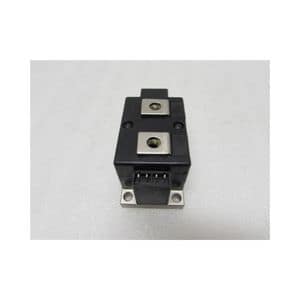
Whole Stacked Fin Aluminum Heat Sink Heatsink Custom Aluminum Profile Folded Fin Heat Sink
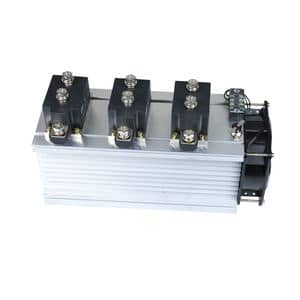
High Power Inverter Power Supply Heat Sink Custom Aluminum Skiving Dense Thin Fins heatsink

Custom Designed Cnc Milling Black Anodized Extruded Aluminum Extrusion Led Street Light Heat Sink heatsink Radiator
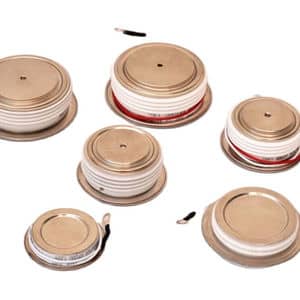
Extrusion heatsinks Cnc Extrusion Profile Custom Aluminum heatsink Aluminium Heat Sink For Power Amplifier
